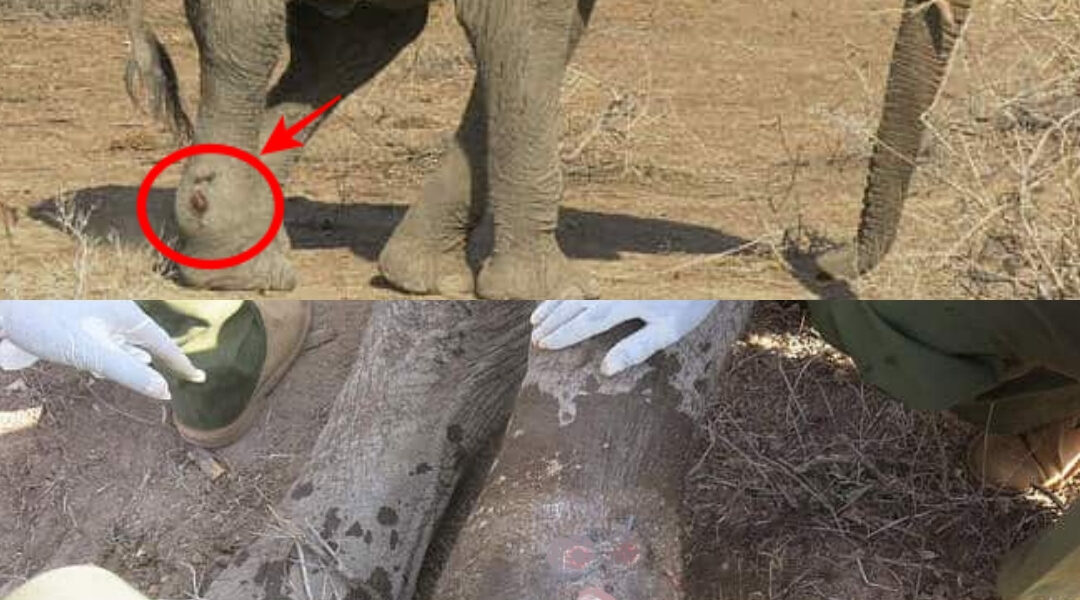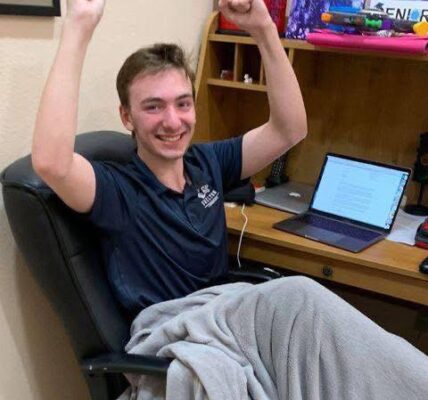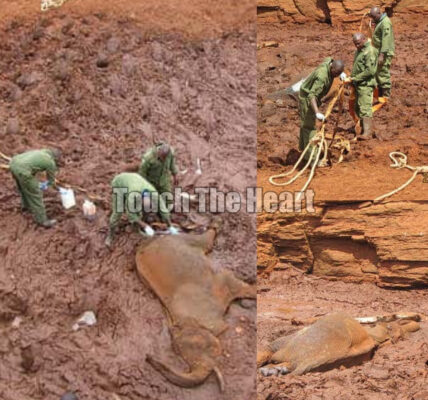It began with a ripple of concern along the banks of the Ewaso Nyiro River — one of Africa’s most vital lifelines for wildlife. A team of field researchers, conducting routine observations near the acacia groves, noticed a young male elephant walking alone. At first glance, he seemed strong and calm, methodically pulling down branches as he fed. But something wasn’t right.

His right hind leg dragged behind him, each step heavy with effort. The great animal’s limp was unmistakable — and painful to watch.
The researchers stopped their vehicle, cameras and binoculars in hand, studying his movements. The swelling around his leg was visible even from a distance, the joint thick and misshapen. Despite his quiet composure, they could tell: this elephant was suffering.
Without hesitation, they radioed for help. A veterinary response team was dispatched immediately.
🐘 A Lone Elephant by the River

When they arrived, the young bull was still near the river, standing in the shade of a large acacia. He watched the approaching team warily but did not move away. His eyes were alert — intelligent and calm — as if he somehow knew they were there to help.
After assessing his condition, the team decided to immobilize him for a closer examination. At 4:09 p.m., a dart carrying 3 mg of Etorphine hydrochloride was fired from a safe distance. Within minutes, the elephant gently lay down, his massive frame settling in the soft dust by 4:16 p.m.
The air grew still. The team moved quickly.
🩺 Diagnosis: A Painful Past

As the veterinarians examined the leg, the truth emerged. Beneath the swelling was an old fracture in the tarsal bones — the equivalent of an ankle injury in humans. The bones had healed incorrectly, forming thick callous tissue around a malunion, a sign that the elephant had likely suffered a traumatic injury long ago — perhaps from a fall, or even a territorial fight.
Despite the deformity, the wound was clean, showing no fresh bleeding. The team carefully disinfected the area with povidone-iodine, then administered antibiotics and anti-inflammatory medication to prevent infection and ease inflammation.
As they worked, one researcher noted quietly, “He must have carried this pain for months… maybe longer.”
🌿 A Gentle Awakening

By 4:37 p.m., the treatment was complete. The team administered Naltrexone hydrochloride to reverse the sedative. Slowly, the elephant stirred — his trunk twitching first, then his great ears flapping weakly. Moments later, he pushed himself upright, standing tall once more.
Everyone held their breath.
He took one step, then another. The limp remained, but his movements were steady and pain-free. Against all odds, the young bull had learned to live — and even thrive — with his injury.

The researchers smiled, relief washing over them. This was not a rescue born of desperation but of resilience — a reminder of nature’s incredible ability to heal itself with just a little human help.
🌍 A Testament to Compassion and Conservation
In the wild, where survival is often harsh and unforgiving, every life saved is a small victory for hope. This young elephant’s story is more than a field report — it’s a testament to the power of conservation, to the quiet work of men and women who choose compassion over convenience, and to the strength of the creatures they protect.

The researchers will continue to monitor him as he roams the savannah once more, his deformed leg a symbol not of weakness, but of endurance.
Somewhere along the river, as the sun dips low and the herds move through the tall grass, a young elephant walks — limping, yes, but free.
He is living proof that every life, no matter how wounded, still deserves its second chance.





